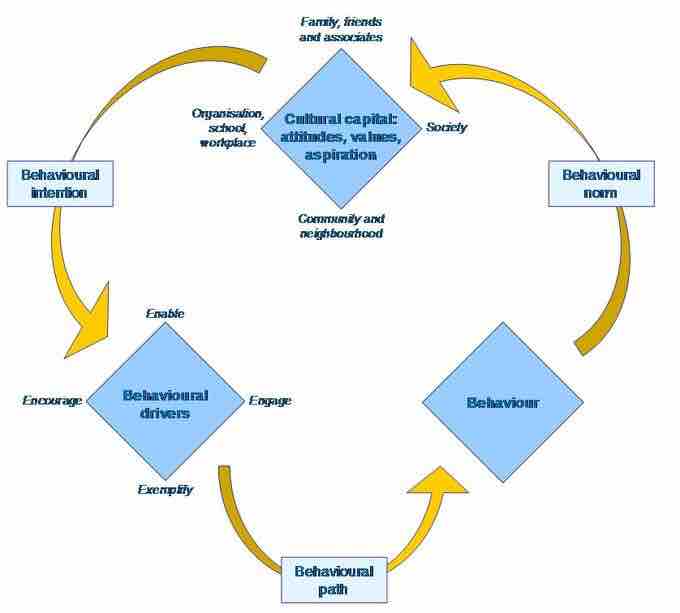Organizational culture refers to the collective behavior of the people who make up an organization; this includes their values, visions, norms, working language, systems, symbols, beliefs, and habits. Organizational culture affects the way people and groups interact with each other, with clients, and with stakeholders. A strong culture is integral to long-term organizational sustainability and success, and one of management's primary responsibilities is to both define and communicate this sense of shared culture.
The process of ingraining culture into an organization is simply one of communicating and integrating a broad cultural framework throughout the organizational process. Central to this process is ensuring that each and every employee both understands and aligns with the values and direction of the broader organization. This creates a sense of community among employees and ensures that the broader objectives and mission of the organization are clear.
While there are a variety of cultural perspectives and many organizational elements within a culture, the initial process of instilling culture is relatively consistent from a managerial perspective. The creation of a given culture is often defined by management's strategy for addressing the following issues:
- The paradigm: Management determines both the mission and vision of the organization and sets a groundwork for the values that employees are expected to align with. Determining these factors and communicating them effectively are absolutely critical to successfully instilling organizational culture.
- Control systems: An example of this may be an employee handbook where behavioral expectations are laid out explicitly (where possible) for employees to read and understand.
- Organizational structures: The choice of an organizational structure has enormous cultural implications for openness of communication, organization of resources, and flow of information.
- Power structures: Power and culture are often intertwined: the degree to which specific individuals are free (or not) to make decisions is indicative of the openness and fluidity of the organization.
- Symbols: All strong brands associate with symbols (think logos). These are not randomly selected: symbols show which specific facets of an organizational culture management considers most important.
- Rituals and routines: Routines are strong behavior modifiers that significantly impact the culture of a given organization. A looser and more open work environment (limited routines, high individual freedom) may create more innovation while heavily structured routines may create more efficiency and predictability.
- Stories and myths: Finally, stories are powerful communicators of culture. Walmart uses Sam Walton's founding as a powerful myth to promote efficiency and the desire to try new things and integrate various products and services. This is organizationally defining.

Cultural change in an organization
The feedback loop of cultural change in an organization involve people's intentions to enable, engage, encourage, and exemplify the new desired behaviors; this in turn influences the frequency of behaviors. After enough reinforcement, those behaviors become the norm, which self-reinforces through increasing people's exemplification of those behaviors.
Overall, managers must be aware of their role as cultural ambassadors and their responsibility in creating a context for successfully instilling organizational culture. For example, promoting a strong authoritarian hierarchy and strong innovation would be an oversight in the field of organizational culture from a management professional. Managers must be careful to instill the culture that is most conducive to both the strategy and objectives of the organization over the long term.